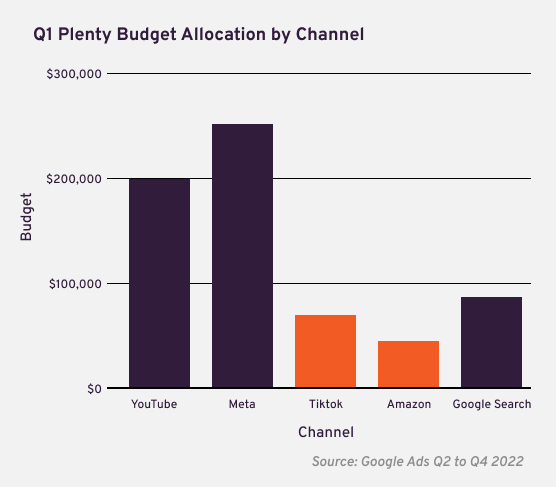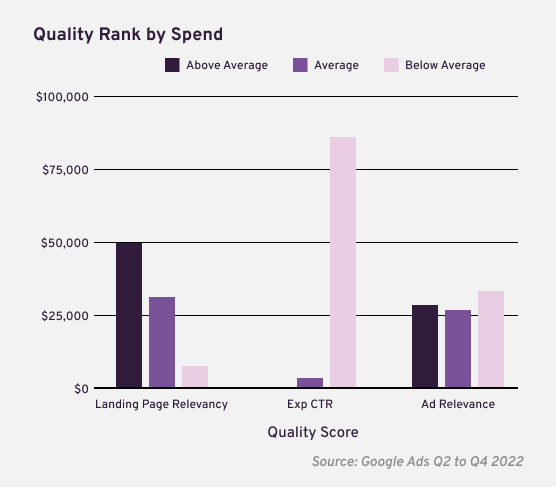TL;DR e-commerce businesses should take the time to understand the nuances around their profitability to create new strategies that support ROI over other traditional metrics like ROAS. One example we share here is how to maximize high-profit segments while finding a sustainable bidding strategy for low-profit groups.
Is ROAS the Right Target for Your E-Commerce Business?
We often hear from our e-commerce clients that a key objective is to maximize revenue with a Return on Ad Spend (which we’ll just call ROAS) target. Sound familiar? The problem is, optimizing towards revenue without factoring in product manufacturing costs can sometimes result in losing money despite a positive ROAS.
Even if Average Order Value (or AOV as it’s usually known) has been accounted for in the ROAS target, a flat ROAS target alone only really works to grow your business if you also have flat profit margins. A lot of e-comm businesses don’t and their profit margins will vary by product. ROAS targets, therefore, need to be adjusted to ensure we are actually improving any ecomm client’s end goal of increased profit and ROI.
We’ve also seen that profit margins don’t always just vary depending on product type, they also change based on the purchaser’s location. Why would location make a difference to the profit margin? Well, in the age of free shipping for the consumer the actual cost of shipping varies for the seller depending on which warehouse the product is shipped from and the distance it’s being shipped to.
On top of all that, stores with large inventories (we’ve had clients with 50,000+ unique products) can have some interesting set-ups and structures for shopping, adding additional challenges. We care about making sure we’re actually helping our client’s businesses grow, not just creating a high ROAS number in their platforms so we take all these elements above into consideration.
One alternative to relying on ROAS? Optimizing for Profit
One shift we make when dealing with complex e-commerce businesses like the ones described above is to move from optimizing for ROAS to optimizing for profit. In order to do this, we identify variables determining whether a product is profitable or not and factor these into a new campaign structure which allows us to prioritize our spend based on profit margin.
What variables do we take into account?
When you deal with significant profit discrepancies in your product inventory it’s important to first identify:
- What variables are you working with? This can vary business to business but we often see region and product type as major factors to consider.
- Based on the above, is there an additional breakdown required? For example, how many regions and how many product types per region are you working with?
- How many profit tiers can you identify per region and product type?
By considering all the above, we often create a regional profit structure with multiple areas (or regions to get repetitive), a specific number of product types, and the necessary profit tiers.
How do we come up with the specific regions?
Our decision is usually based on the difference in shipping cost based on supplier agreement and region. By identifying key clusters with similar shipping cost variance, we can identify the different region groups.
How do we identify the product types?
To be honest, if you have a lot of product types with varying brands, models, sizes, categories, etc. this step can be tough. In the past, we’ve prioritized specific groups based on highest profit impact.
How do we decide on profit tiers?
The profit tier breakdown is determined by the different profit groups tracking across your product inventory. If you have a high discrepancy between groups, it likely makes sense to implement profit tiers.
This high-and low-profit calculation can be done by taking the average contribution margin per product. For any east example, let’s say this number is $10. Anything over $10 could fall in the high-profit category and the remaining under low.
Vanity metrics aren’t everything
What have our results been on running these updates? A much improved return on investment despite a slight decline in ROAS. We know this might sound a bit scary to present back to your team, but trust us when we say that higher profit will always trump vanity metrics. Low ad spend doesn’t mean anything if you aren’t making money on the sale.


We’ve discovered that some of our e-comm clients who implement this make more profit because the product mix shifts to push higher-margin items depending on their user’s location. In other words, it’s more bang for your ad buck.
Bonus: What about incrementality?
If you want to get real fancy, you can bring incrementality estimates into this optimization model and begin optimizing for estimated incremental profit. Sound complicated? We break down how we approach working through incrementality testing in this blog post.
What does this mean for you?
One of the things we pride ourselves on at Thrive is pushing the status quo. We do what’s right for our clients' business, not what makes us look best on paper. Don’t be afraid to play around with your ad program and the metrics you’re looking to deliver upon in order to create the best results possible. Or reach out and let us do it for you! We’re always happy to chat.